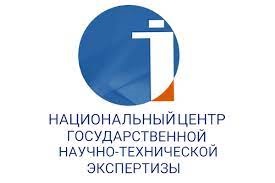Ethnosemantics of the protective function of Kazakh anthroponyms and ethnonyms related to folk beliefs
https://doi.org/10.55491/2411-6076-2025-1-25-34
Abstract
The article examines traditional Kazakh personal names and the names of tribal-clan associations, as well as the semantics of customs, taboos, beliefs, and superstitions underlying them.
The relevance of the research is determined by the need to expand the Onomastic Subcorpus of the “National Corpus of the Kazakh Language” with anthroponyms and ethnonyms.
Additionally, an important aspect is uncovering the ethnocultural semantics of archaic names and ethnonymic models, which have lost their clarity and turned into anachronisms – closed code structures incomprehensible to the modern linguistic community. This necessitates their interpretation through folk knowledge and traditional perceptions.
The scientific significance and novelty of the article lie in identifying the protective, magical, and ritual functions encoded within the “negative” semantics of anthroponyms and ethnonyms based on onomastic material from the 19th century.
The study employed traditional methods of systematization, description, and historical-factual interpretation of linguistic material. The cultural-semantic analysis method made it possible to identify the types of anthropo - and ethnomodels connected to the practical life of the people and their mythological worldview. The research revealed that most clan-tribe names were based on nicknames, and their motivation was associated with the function of protection against “negative” or mystical forces. Personal names and tribal-clan names of the 19th century reflected the “linguistic worldview” of the Kazakh nomadic society of that era, representing an onomastic interpretation of real linguistic content.
Keywords
About the Authors
K. RysbergenKazakhstan
Kyzdarkhan Rysbergen, Doctor of Philology
Almaty
D. Pashan
Kazakhstan
Dana Pashan, Candidate of Philological Sciences
Almaty
K. Gabitkhanuly
Kazakhstan
Kairat Gabitkhanuly, Candidate of Philological Sciences, Associate Professor
Almaty
References
1. Amangeldі, Zh. (2023) Adam esіmіnde zhan bar. «Ajqyn» aqparat. 14/01/2023/ https://aikyn.kz/ 14/01/2023. [Amangeldі Zh. (2023) There is a soul in a human name. «Ajqyn» information. 14/01/2023/ https://aikyn.kz/14/01/2023.] (in Kazakh)
2. Auezov, M. (2020) Abaj zholy: roman-jepopeja. Almaty: Meloman. 834 b. [Auezov, M. (2020) The path of Abai: novel-epic. Almaty: Meloman. 834 p.] (in Kazakh)
3. Borisova, E.O. (2024) K izucheniju individual`nyh prozvishh s situativnoi motivaciej v russkih narodnyh govorah. Voprosy onomastiki. T. 21. Vyp. 3. S. 156-177. [Borisova, E.O. (2024) On the study of individual nicknames with situational motivation in Russian folk dialects. Onomastics issues. Vol. 21. Iss. 3. P. 156-177.] (in Russian)
4. Dauіtuly, S. (1993) Qaban aqyn daryny – Qaban zhyrau. Altyn qazyq, olengder, ajtystar, angyzdar. 108 b. [Dauіtuly, S. (1993) The talent of the Kaban poet – Kaban zhyrau. Golden peg, poems, aitys, legends. 108 p.] (in Kazakh)
5. Hazieva-Demirbash, G.S. (2017) Lechebno-zashhitnye lichnye imena v tradicionnoj tatarskoj kul'ture. Voprosy onomastiki. T. 14. № 3. S. 72-83. [Khaziyeva-Demirbash, G.S. (2017) Therapeutic and protective personal names in traditional Tatar culture. Questions of onomastics. V. 14. No. 3. P. 72-83.] (in Russian)
6. Islam, A. (2004) Ulttyq madeniet konteksіndegі dunienіng tіldіk suretі (salystyrmaly-salgastyrmaly lingvomadeni saraptama) : filol. ғyl. dokt. ... avtoref.: 10.02.19. Almaty, 50 b. [Islam, A. (2004) Linguistic picture of the world in the context of national culture (comparative linguistic and cultural examination) : philol. science. doct. ... abstract.: 10.02.19. Almaty. 50 p.] (in Kazakh)
7. Materialy po kirgizskomu zemlepol'zovaniju, sobrannye i razrabotannye jekspediciej po issledovaniju stepnyh oblastej (1902). T. 11: Akmolinskaja oblast'. Omskij uezd. Omsk. – 359 s. [Materials on Kyrgyz land use, collected and developed by the Expedition for the study of steppe regions (1902). Vol. 11: Akmola region. Omsk district. Omsk. 359 p.] (in Russian)
8. Omari, Zh. (2000) Qaz dauysty Qazybek bi. Astana: Foliant. 317 b. [Omari, Zh. (2000) Strong voice Kazybek bi. Astana: Foliant. 317 p.] (in Kazakh)
9. Qajdar, A. (2013) Qazaqtar ana tіlі alemіnde (jetnolingvistikalyq sozdіk). Qogam. Almaty: Sardar. 867 b. [Kaidar, A. (2013) Kazakhs in the world of their native language (ethnolinguistic dictionary). Society. Almaty: Sardar. 867 p.] (in Kazakh)
10. Qazaqtyn jetnografijalyq kategorijalar, ugymdar men ataularynyng dasturlі zhujesі (2017). 1-5 t. Almaty: Alem. Damu. Integracija. [Traditional system of Kazakh ethnographic categories, concepts and names (2017) V. 1-5. Almaty: The world. Development. Integration.] (in Kazakh)
11. Seitbatqal, A.B. (2022) Tarihi zhane zamanaui laqap esimderding jethnolinguistikalyq erekshelikteri. Tiltanym No.1(85). [Seitbatkal, A.B. (2022) Ethnolinguistic features of historical and modern nicknames. Tiltanym No. 1(85).] (in Kazakh)
12. Sejіtova, Sh.B. (2019) Qazaq jetnonimderіnіng tarihi-lingvomadeni zhujesі (Shygys Qazaqstan ajmagy materialdary bojynsha). Monografija: Semej. 308 b. [Seitova, Sh.B. (2019) Historical and linguistic and cultural system of Kazakh ethnonyms (Based on the materials of the East Kazakhstan region). Monograph: Semey. 308 p.] (in Kazakh)
13. Snasapova, G.Zh. (2003) G. Musіrepovting «Ulpan» povesіndegі lingvomadeni bіrlіkter : filol. gyl. kand. … avtoref., 10.02.02. Almaty. 34 b. [Snasapova, G.Zh. (2003) Linguocultural units in the story "Ulpan" by G. Musrepov : philol. science. kand. ... abstract., 10.02.02. Almaty. 34 p.] (in Kazakh)
14. Zhanbolatuly, M. (2004) Tobyqty – Shyngystau shezhіresі, 1 t. 520 b. [Zhanbolatuly, M. (2004) Tobykty – the Chronicle of Chingistau, 1 Vol. 520 p.] (in Kazakh)
15. Zhanuzaqov, T. (1971) Qazaq esіmderіnіng tarihy. Almaty: Gylym, 215 b. [Zhanuzakov, T. (1971) History of Kazakh names. Almaty: Gylym, 215 p.] (in Kazakh)
16. Zhanuzaq, T. (2021) Qazaq onomastikasy. Bes tomdyq. T.4. Nur-Sultan. Halyqaralyq Turіk akademijasy. [Zhanuzak, T. (2021) Kazakh onomastics. Five volumes. Vol. 4. Nur-Sultan. International Turkish Academy.] (in Kazakh)
17. Zhunіszhanuly, Zh. (2002) Otyz aulet – myng urpaq. Almaty: Qaganat. 336 b. [Zhuniszhanuly, Zh. (2002) Thirty dynasties – a thousand generations. Almaty: Kaganat. 336 p.] (in Kazakh)
18. Zhurtbaev, T. (1994) Dulyga. Almaty: Zhalyn. 1 t. 366 b. [Zhurtbayev, T. (1994) Helmet. Almaty: Zhalyn. V. 1. 366 p.] (in Kazakh)
Review
For citations:
Rysbergen K., Pashan D., Gabitkhanuly K. Ethnosemantics of the protective function of Kazakh anthroponyms and ethnonyms related to folk beliefs. Tiltanym. 2025;97(1):25-34. (In Kazakh) https://doi.org/10.55491/2411-6076-2025-1-25-34

















